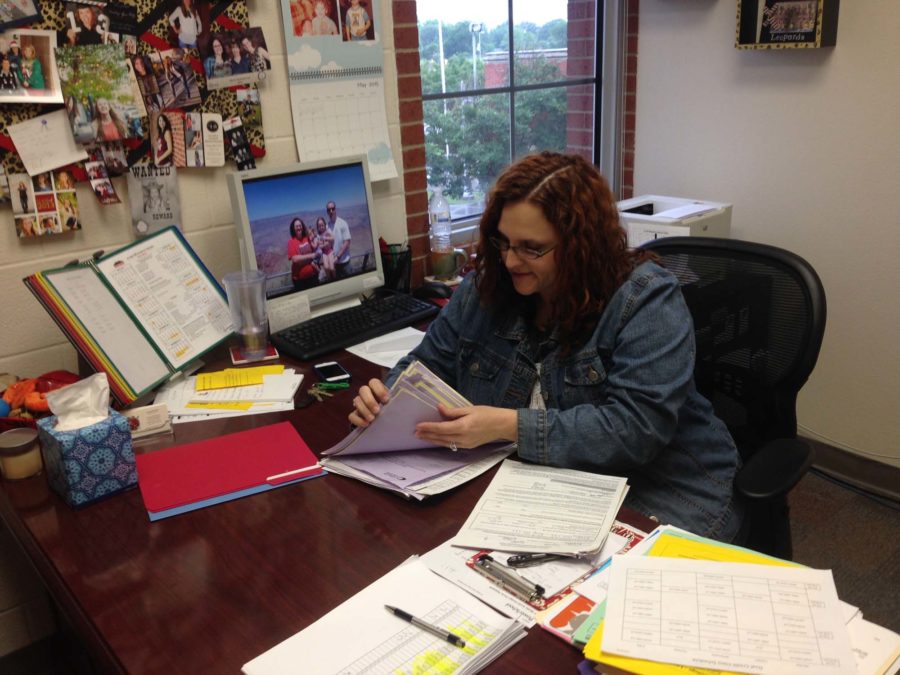The science of scheduling
Sorting through papers at her desk, counselor Amanda Breeden and others must look at thousands of variables when putting together student schedules.
May 15, 2015
Behind the scenes of the schedules that every student receives at the end of the summer lies a system of computer programs, meetings, and input from various parties. The masterminds of this intricate process are the counselors.
“The students make their requests in February,” counselor Amanda Breeden said. “The principals then look at the numbers so they can see if we need to hire more teachers, how many sections of each class we need and other information. The process begins in February and goes all the way until the first day of school.”
In order to help each student meet their requirements for graduation, rising seniors are granted first priority.
“We do our best to give everyone their top eight choices,” Breeden said. “We look at seniors first to make sure they have all of their graduation requirements and then we work our way down to freshmen.”
A computer program is used to help organize all of the requests that students have.
“We use PowerSchool,” Breeden said. “It runs a schedule based on all the requests that are put in.”
Department heads report to other staff members, who then help out with some other decisions with the counselors and principals.
“I work on the Master Schedule, so I take each department’s input and try to make a schedule that works for as many students as possible,” Center for Academic Training lead Tania Vaughn said. “This could include things like needing an extra section, reporting that there are not enough students that want to take a course, or providing solutions to get as many students as possible in the classes of their choice. While I do not get to make any “big” decisions, I report what I see and allow the administrators to determine what is best.”
Some of these “big” decisions involve how many classes the school can have and other numbers.
“We actually offer over 300 different courses at LHS each year,” principal Chris Mayfield said. “What determines this is student interest, teacher availability and when to offer them in the school day so that the most students can take the course.”
Maximum and minimum class numbers also play a very important role in the planning of the master schedule.
“In general, for planning purposes, the minimum number in a class is 12 and the maximum is 25,” Mayfield said. “There are definitely exceptions to that and there can be classes in the fall that have more or less than those numbers, but those serve as our guidelines for beginning our work on the master schedule.”
Even though their input is very important, many students do not know what it takes for the administrators to create the schedules.
“I don’t really know how they make it,” sophomore Ellie Stockton said. “I just know that I turn in my schedule form and then I get my schedule.”




